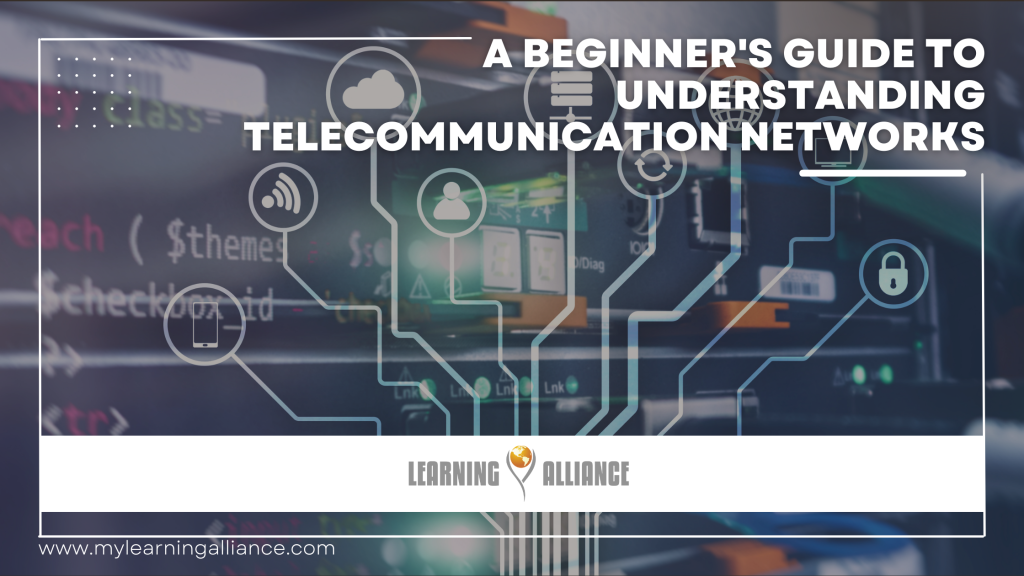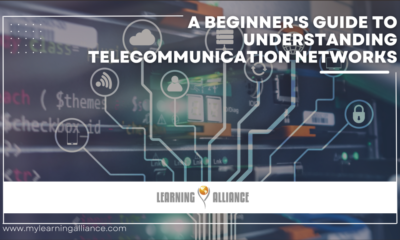TECHNOLOGY
Going through How Language Affects International Communication and Technology

Key Takeaways:
- Language diversity paints a vibrant picture of our cultural heritage and global interaction.
- The need for comprehensive language translation services is at an all-time high in the digital era.
- Advancements in technology, particularly AI, are revolutionizing how we approach language barriers.
Introduction to Language Diversity
Living in a world thriving with 7,000 spoken languages, diversity in communication is not just a reality but a tapestry illustrating the richness of human culture. Even as globalization brings us closer, language remains a cornerstone of identity and expression. This range of tongues shapes personal interactions and presents unique opportunities and challenges in global commerce and technology. Businesses and individuals face the formidable task of navigating linguistic complexities in the modern global marketplace. Digital communication tools have facilitated and complicated this landscape, as individuals from varying linguistic backgrounds interact more frequently and in more varied contexts. This linguistic tapestry requires innovative solutions to ensure clear and effective communication. Amongst the array of languages, the need for effective language translation becomes apparent as it bridges the gaps and weaves together disparate linguistic communities.
The Evolution of Language in the Digital Age
The digital revolution has irreversibly altered the linguistic landscape. Technology has changed the mediums through which we communicate and fostered the emergence of new lexicons and dialects within digital communities. Platforms like social media have become melting pots for linguistic experimentation and evolution, dissolving traditional barriers. Internet slang, emojis, and machine-generated languages are emerging as byproducts of our digital discourse. Concurrently, the rise of artificial intelligence and sophisticated algorithms empower real-time translation and multilingual content creation breakthroughs. This evolution is prying open the doors to a future where language barriers are becoming increasingly transparent.
The Significance of Language Translation in Business
Business ventures that span continents frequently confront the complexities of multilingual dialogue. Therefore, Language translation services have become invaluable in crafting an effective global business strategy. Companies that excel at leveraging linguistic assets report success in establishing a more profound global reach. Providing materials, support, and interaction in multiple languages can significantly increase a brand’s appeal, allowing it to transcend cultural and linguistic barriers. A critical factor in international business, language translation links economies and cultures, thus propelling economic growth and fostering international relations.
Language and Cultural Identity in the Modern World
Language is more than a means of communication. It is the essence of cultural heritage and individuality. With linguistic diversity in the spotlight, technology is pivotal in facilitating communication and preserving endangered languages. Efforts are ongoing to use digital tools and platforms to document and revitalize these languages, providing resources and spaces for language communities to flourish. Technology and language combine to nurture cultural identity and sustain minority dialects that might otherwise yield dominant languages. The interrelations between language, culture, and worldviews are profound, and the digital age offers a unique opportunity for cultural expression and preservation.
The Science of Language Learning
The science behind language acquisition has fascinated many, leading to cutting-edge developments in educational methodologies. Technology (through applications, interactive platforms, and even gamification) has revolutionized traditional language learning landscapes, making it more accessible and engaging for learners of all ages. Evidence from cognitive science suggests that learning a second language can enhance brain function, including improved memory, problem-solving skills, and cognitive flexibility. As we delve deeper into the nuances of how we acquire languages, technology integration in educational practices continues to evolve, heralding a future where multilingualism is the norm.
The Future of Language: Trends and Predictions
Peering into the future, the realms of language and technology are bound for an even closer alliance. Language technology holds immense promise, with advancements like real-time translation earpieces and increasingly sophisticated AI-driven interpretation services just the beginning. The convergence of linguistic research and technological innovation hints at a future where communication hurdles are nearly nonexistent. Yet, as we advance, the challenges of catering to the world’s breadth of languages remain an ongoing mission for linguists and technologists alike. Staying apace with evolving language trends while maintaining the richness of linguistic diversity is the balancing act defining global communication’s future.
Bridging the Communication Gap in Healthcare
Healthcare systems worldwide are increasingly faced with overcoming language barriers to provide equitable care. The critical role effective communication plays in healthcare outcomes cannot be overstated. Language translation technology offers a lifeline in contexts where clear communication is not just a convenience but a matter of life and death. Medical interpreters and digital translation tools are becoming critical components in the patient care spectrum, ensuring patients receive accurate information and quality care regardless of their linguistic background. Real-life examples reveal the sometimes stark disparities in medical outcomes attributable to language barriers, reaffirming the need for continued investment in translation services within the healthcare industry.
Language Accessibility in Entertainment and Media
The demand for language accessibility has skyrocketed in the entertainment industry. From blockbuster films to viral video content, subtitles and dubbing unlock the door to global audiences and cross-cultural storytelling. But language access goes beyond mere translation, encompassing cultural nuances, humor, and context, ensuring the original intent and message are conveyed. Streaming platforms exemplify this trend, offering content in multiple languages to cater to a diverse subscriber base. The push for inclusive entertainment grows as the world becomes more interconnected, fostering a shared global narrative and enhanced cultural understanding.
The Politics of Language: A Global Perspective
A complex interplay of power dynamics lies at the nexus of language and politics. Language can both unite and polarize populations and is an intrinsic part of the political fabric of nations. It influences national identity, social integration, and global diplomacy. As countries strive for economic and political influence on the global stage, multilingualism and language diplomacy have become increasingly critical tools. Governments and institutions must navigate the challenges of promoting national languages while embracing global lingua francas to foster international relations. Language policy thus remains a contentious yet crucial area of study in a world where communication is rapidly evolving.
TECHNOLOGY
The Vital Role of HCC Risk Adjustment Coding in Optimizing Healthcare Outcomes

Table of Contents
- The Fundamentals of HCC Risk Adjustment Coding
- Enhancing Patient Care Through Accurate HCC Coding
- Financial Implications of HCC Coding for Healthcare Providers
- Data-Driven Decisions: How HCC Coding Influences Healthcare Strategies
- Training and Education: Equipping Coders for Excellence in HCC Coding
- Looking Ahead: The Future of HCC Coding in Healthcare Innovation
Healthcare institutions worldwide are grappling with the challenge of providing high-quality patient care while managing finances efficiently. They have turned to the Hierarchical Condition Category (HCC) risk adjustment coding methodology to tackle this hurdle. This systematic approach analyzes patients’ diagnoses and conditions to predict healthcare costs accurately. The HCC risk adjustment coding is critical in creating personalized care plans for each patient and ensuring healthcare providers receive proper reimbursement. The HCC system’s importance lies in its ability to achieve positive healthcare outcomes and maintain the financial sustainability of healthcare organizations. By leveraging HCC, healthcare providers can anticipate costs, mitigate risks, and provide patients with the highest quality care.
The Fundamentals of HCC Risk Adjustment Coding
At its essence, HCC risk adjustment coding is utilized to forecast healthcare expenditures by employing a patient-centric focus on their illnesses and ongoing conditions. The Hierarchical Condition Category (HCC) model is a sophisticated healthcare analytics tool that enables healthcare providers and insurance companies to predict patient resource needs and cost of care. The HCC model does this by mapping patients’ health states to specific codes that reflect the nature and severity of their health conditions. This approach enables healthcare providers and insurance companies to develop a comprehensive understanding of patients’ medical needs and allocate resources effectively. The HCC codes are essential in characterizing patients’ health status and provide insurance providers with a framework for allocating funds effectively. The codes reflect the complexity of patients’ conditions, such as chronic conditions, acute illnesses, and comorbidities. It ensures that healthcare providers receive payments that align with the risk they undertake in managing their patient pools.
Enhancing Patient Care Through Accurate HCC Coding
Accurate HCC coding is more than a clerical task—it’s a crucial component of personalized healthcare. When health conditions are coded precisely, healthcare providers can craft and refine treatment approaches based on comprehensive understanding. This leads not only to improved health outcomes but also to a higher standard of patient satisfaction. Accuracy in this coding process means clinicians can trust the reliability of the data, which is indispensable for making informed decisions about patient care.
Financial Implications of HCC Coding for Healthcare Providers
Accurate coding of patient conditions is essential for healthcare providers to receive the appropriate funding needed to manage patient care. Hierarchical Condition Category (HCC) codes reflect the severity and complexity of a patient’s health condition. The more precise the HCC codes, the more accurate the funding allocation, ultimately impacting healthcare institutions’ financial performance. This funding ensures that patients receive the best possible care and that the economic health of the institution is in sync with the physical health of the patients they serve.
In addition, accurate coding reduces the risk of audits and monetary penalties, which can harm healthcare institutions’ operational stability. By maintaining proper coding practices, healthcare providers can build trust among stakeholders in the healthcare industry, including patients, providers, and payers. This trust can improve patient outcomes and long-term financial stability for healthcare institutions.
Data-Driven Decisions: How HCC Coding Influences Healthcare Strategies
Decision-making in healthcare organizations is increasingly data-driven, relying on accurate coding and reporting systems like HCC. This data lays the groundwork for many strategic decisions, from resource allocation to population health management. Insights gained from HCC coding enable healthcare providers to discern patterns in patient outcomes, optimizing care delivery and enhancing preventive health efforts.
Training and Education: Equipping Coders for Excellence in HCC Coding
The healthcare industry uses complex coding systems to navigate patient care and billing. This system can only function effectively with highly skilled professionals specializing in healthcare coding. They translate medical procedures into the correct codes, which is crucial for accurate billing and reimbursement.
Educational initiatives and training programs are necessary to achieve the accuracy required in healthcare coding. These programs equip coders with the skills to interpret medical procedures and translate them into relevant codes accurately. This leads to greater accuracy in HCC coding and reduces the risks of misrepresentation and fraud.
Apart from benefiting patients and the healthcare industry, education also benefits the coders themselves. By improving their skills and knowledge, coders can advance in their careers and take on more challenging roles within the industry. Ultimately, investing in the education of coding personnel strengthens the backbone of healthcare data integrity. It ensures that the industry continues to provide high-quality care to patients.
Looking Ahead: The Future of HCC Coding in Healthcare Innovation
As the healthcare industry progresses, new and innovative technologies and methodologies are continually being introduced. The field of HCC coding is no exception. With the advent of artificial intelligence, machine learning, and advanced data analytics, the future of HCC coding is poised to undergo a significant evolution. These cutting-edge technologies offer faster, more precise, and increasingly sophisticated coding practices that can significantly improve the quality of patient care. By adopting and integrating these advancements into their operations, healthcare providers can streamline their administrative processes and enormously impact the standard of care delivered to their patients. The future of HCC coding is bright, and healthcare providers that embrace these innovations are poised for success.
TECHNOLOGY
The Smart Buyer’s Guide to Acquiring Heavy Equipment at Auctions

Key Takeaways:
- Understanding the auction landscape can dramatically influence your investment in heavy equipment.
- Preparation is essential; knowing the equipment’s value, condition, and operational history will inform smart bidding.
- Post-auction considerations like transportation and maintenance are crucial for long-term satisfaction and ROI.
- Real-life success stories offer tactical insights into making the most of heavy equipment auctions.
Navigate heavy equipment auctions like a pro with this comprehensive guide. Learn how to assess equipment conditions, set a budget, and conduct thorough research. Discover strategies for bidding effectively and maximizing value. Understand the importance of inspecting equipment beforehand and identifying potential red flags. Explore reputable auction platforms and ensure secure transactions. With valuable tips and insights, this guide empowers buyers to make informed decisions and acquire heavy equipment confidently. Whether you’re a seasoned buyer or new to auctions, this resource equips you with the knowledge and tools needed to succeed in the competitive world of heavy equipment acquisition.
Understanding the Benefits of Auctions for Heavy Equipment
Heavy equipment auctions have emerged as symbols of diversity and cost-saving opportunities within the market. They provide a platform where construction firms, agricultural enterprises, and other industries can explore a wide range of machinery, often at lower costs than traditional retail channels. These auctions offer a unique opportunity for buyers to access a diverse selection of heavy equipment while potentially enjoying significant savings. Beyond the financial allure, auctions provide a snapshot of the current market landscape, revealing trends in both availability and demand. By providing a large selection of practically new to gently used items, heavy equipment purchases at auctions expedite the procurement process and meet various business demands and budgets.
Pre-Auction Preparation: What You Need to Do
Entering an auction without adequate groundwork is akin to navigating without a compass. Market-savvy bidders commit to researching past auction results, discerning market fluctuations, and extracting predictions for future valuations. The bedrock of this preparation lies in understanding the value of the heavy equipment on offer. Resources like the Kelly Blue Book’s guide on Heavy Equipment Pricing are instrumental in equipping buyers with what price tag a piece of equipment should rightfully bear. In parallel, conducting a self-audit of equipment needs against performance specifications ensures that the auction experience aligns with business objectives. Financial foresight extends beyond the initial purchase price, enveloping potential repair costs, transportation, and operational expenses into a holistic budget.
Navigating Online Auctions: Strategies for Success
The proliferation of online auctions offers unparalleled convenience, allowing buyers to scout for equipment across geographic boundaries. The digital format, however, demands proficiency with the platform’s tools and protocols; understanding the fine print of online deals is non-negotiable. Thriving in the online auction space entails a vigilant approach to bid tracking, insightful analysis of item descriptions, and a proactive stance on seeking additional information. This could involve liaising with auction houses for detailed reports or requesting virtual tours to assess the machinery’s condition better.
Inspection Tips: Ensuring Quality Before Bidding
They are fostering confidence in your auction purchase pivots on comprehensive inspections. The tactile examination of the equipment, the scouring for operational red flags, and the appraisal against industry benchmarks delineate a prudent bid from a haphazard gamble. Even in the case of online auctions where physical scrutiny is less accessible, requesting comprehensive photographs, service histories, and seller disclosures can mitigate uncertainties. For instances necessitating expertise beyond one’s purview, professional inspectors step into the frame as the guardians of one’s investment, applying their seasoned eyes to ensure that the lucrative bid does not disguise an amalgam of mechanical woes.
Understanding Auction Terms and Conditions
Every auction house operates under a banner of distinct terms and conditions that dictate the transaction’s rhythm. Mastery of these rules — from payment deadlines to buyers’ premiums — becomes a bidder’s passport to avoid potential transactional turbulence. The minutiae of ‘as-is’ clauses and warranty stipulations weave a legal fabric that might protect or punish the unwitting buyer. Imbued with this knowledge, informed participants are better equipped to navigate the procedural maze of an auction, ensuring transactions culminate in satisfaction rather than unexpected liability.
Bidding Strategies: When to Play and When to Stay
The throes of a live auction can evoke a heady mix of adrenaline and competition. In this environment, seasoned bidders deploy discernment, resisting the siren calls of emotional bidding wars. Erecting rigid parameters for maximum bids erects safeguards against over-expenditure, anchoring decisions in logic rather than the heat of the moment. Understanding when the competition has exceeded the bounds of financial prudence marks the expert bidder, who knows the power of a strategic withdrawal in the face of escalating prices.
After the Auction: Managing Transportation and Logistics
The gavel’s final bang heralds the onset of logistical maneuvering. Transporting large-scale equipment demands equal parts logistical prowess and diligent planning. Knowledge of the dismantling, loading, routing, and final delivery imbues the buyer with control over the transit destiny of their newly acquired assets. The collective accounting for these factors in the pre-auction budget averts the sting of unforeseen expenses, solidifying a triumph at auction into concrete success upon delivery.
Maintenance and Upkeep for Auction-Bought Equipment
The stewardship of heavy machinery does not pause at procurement; it extends into an ongoing commitment to maintenance. Recognizing the importance of regular servicing, adherence to manufacturer guidelines, and preemptive replacements ensconces the machinery within a protective envelope, staving off depreciation and operational failures. Securing extended service plans, if available, may supplement one’s maintenance regimen, providing a buffer of assurance in the mechanical integrity of the heavy machinery on hand.
Future Resale: Maximizing the Return on Your Investment
Even as one auction concludes, astute buyers approach the eventuality of resale. Forethought in this domain encompasses comprehensive documentation of purchase details, scrupulous maintenance records, and active observation of market tides that influence resale values. Tangential elements, such as the machine’s appearance and traces of diligent upkeep, coax favorable sale conditions, maximizing the potential return on one’s initial auction investment.
Real-Life Buyer Success Stories: Learning from Others
Grounded in the narratives of those who’ve navigated the auction labyrinth successfully are the breadcrumbs of wisdom for future participants. Real-life anecdotes encapsulate a reservoir of tactics, the cautionary tales warding against common missteps and the triumphant strategies revealing pathways to a prosperous bid. Engaging with the candid chronicles of industry insiders, like those found on the Machinery Trader blog’s Selling Tips, enhances the bidder’s repertoire of strategies, galvanizing them with the insight to recognize golden opportunities amid the fast-paced cadence of the auctioneer’s call.
TECHNOLOGY
A Guide to Understanding Telecommunication Support Programs

Overview of Telecommunication Support Programs
Telecommunication support programs serve as vital platforms to bridge the digital divide, enabling individuals from various backgrounds to connect with the larger global community. These initiatives offer a gateway for those who may otherwise be isolated due to the high cost of communication services. Predominantly, these programs target low-income families, seniors, and individuals with disabilities, facilitating essential services that most take for granted.
Accessibility to communication can significantly influence one’s ability to succeed in various areas of life, such as employment, education, and health. By providing subsidized or discounted services, these support programs ensure that fewer individuals face the barriers of excessive communication costs. This introductory section lays the foundation for comprehending the scope and significance of telecommunication support programs and their role in fostering an inclusive society where connectivity is regarded as a basic need rather than a luxury.
Eligibility Criteria for Support Programs
Each telecommunication support program has specific criteria that applicants must meet to qualify for assistance. These typically revolve around income level—often set at a percentage of the federal poverty line—or participation in other government assistance programs. For example, individuals might be eligible if they are recipients of federal housing assistance, veterans’ pensions, and tribal programs, among others. To navigate these criteria effectively, prospective applicants should consult program guidelines and potentially seek advice from outreach organizations that specialize in aiding applicants through the process.
Specific nuances, such as household size and state-specific guidelines, can also affect eligibility. Individuals looking to leverage these support programs must conduct thorough research or confer with program representatives to ensure they meet all requirements. Clarifying eligibility criteria is paramount to prevent confusion during the application process and ensure those in need can access these vital services immediately. For many people, understanding the Lifeline qualifications can open doors to new opportunities and basic services, ensuring equitable access to information and communication technologies.
Understanding the Application Process
The application process for telecommunications support programs can vary, but it typically involves filling out forms and submitting documentation to prove eligibility. Applicants may need to provide recent tax returns, pay stubs, or documentation from other assistance programs. They will also be asked to submit personal identification, such as a birth certificate or a driver’s license, to confirm their identity. Navigating this intricate process can be straightforward if applicants carefully follow the guidelines and checklists.
Sometimes, there might be an option to apply online, by mail, or in person at designated centers. Applicants should verify the preferred method of the specific program they are applying for to avoid delays. Additionally, program representatives typically offer assistance via phone or in-person consultations, answering any questions and providing crucial guidance. This facilitation ensures applicants are well-informed about the application cycle, including timelines and follow-up requirements post-submission.
Types of Benefits Provided
The scope of benefits offered by telecommunication support programs can extend from discounts on monthly phone or internet services to providing low-cost smartphones or other communication devices. Amongst the most impactful benefits are programs that facilitate special rates for broadband internet, a service increasingly crucial for full participation in today’s digital society. In some instances, additional support may be extended for installation or initiation service fees, further reducing qualifying individuals’ economic barriers.
Keeping abreast of which benefits apply and how to optimize them can maximize the assistance received. Beneficiaries must understand the immediate savings and the long-term opportunities such benefits can unlock. Access to the internet supports learning, job searches, and staying connected with friends and family, fundamentally altering an individual’s quality of life and community engagement.
Fostering Digital Inclusion
Central to the theme of digital inclusion is the idea that everyone deserves access to digital tools and the internet, regardless of economic standing. Support programs embody this ideal by removing the financial constraints that prevent many from digital participation. Initiatives under this umbrella strive to mitigate inequalities in the digital realm, believing that access to information and digital resources is a cornerstone of modern life.
Advocating for digital literacy and providing training and resources are also integral to promoting digital inclusion. The broader objective extends beyond mere access, aiming to equip individuals with the knowledge and skills to navigate online platforms competently and safely. This commitment to inclusion underscores that connectivity and digital competence are now essential to societal participation.
Consumer Rights and Protections
Upholding consumer rights is imperative within telecommunication support programs. These rights protect against potential exploitation and ensure participants receive fair and transparent service. Beneficiaries should expect clarity on the scope of services provided, any associated costs, and their right to privacy regarding personal data shared during the application process. Moreover, there should be straightforward procedures to address grievances and resolve disputes with service providers.
Many programs are governed by regulations that mandate specific service standards and stipulate the remedies available should providers fall short. These protections reinforce the trust between providers and beneficiaries and foster an atmosphere where consumers are knowledgeable and not hesitant to demand their rights be respected. Educated consumers can better navigate the terms of their participation in these programs and, thus, extract the full benefits intended by such initiatives.
Impact of Telecommunication Support on Communities
Providing affordable telecommunication services via support programs can catalyze change within communities, serving as a cornerstone for socioeconomic mobility and empowerment. Connectivity enables community members to pursue better educational outcomes by accessing online distance learning opportunities and educational resources. Small business owners and job-seekers benefit through improved access to commercial platforms, job listings, and networking opportunities.
The positive implications of telecommunication access on public health cannot be understated either. Telehealth services, which have become increasingly prominent, allow individuals to consult healthcare professionals remotely, transcending geographical and transportation-related barriers. The cumulative effect of these benefits manifests in more robust, more resilient communities, where communication and information-sharing foster collective advancement and individual growth.
Real-World Case Studies
Real-world case studies often capture the transformative power of telecommunication support programs better than statistics can. They narrate how individuals have surmounted barriers to accessing employment opportunities that were previously out of reach or how students in remote areas have overcome educational disadvantages. Stories of connection and empowerment emanate from all corners, from veterans who maintain critical support networks to seniors who remain in touch with family and community services.
These stories encapsulate the practical benefits of connectivity and the immeasurable value of community and interaction in our daily lives. Individuals who partake in these stories typically illustrate a newfound sense of independence and inclusion, reinforcing the purpose and need for such programs within our society.
Continuing Challenges for Participants
Despite the undeniable advantages, participants in telecommunication support programs sometimes need help to overcome obstacles that can limit the effectiveness of the assistance received. Keeping up with ever-changing technology and program updates demands ongoing education and awareness. Some individuals may also encounter barriers such as limited coverage areas or challenges in understanding the technology provided to them.
Efforts are underway to address these challenges, including outreach and education campaigns and evolving program stipulations to be more inclusive and up-to-date with technological trends. By providing continuous support and accommodating the changing needs of participants, these programs can remain vital tools for digital inclusion.
The Future of Telecommunication Support Programs
As the digital landscape evolves, so will the nature and structure of telecommunication support programs. Anticipated developments include:
- Expanded coverage.
- Enhanced benefits to keep pace with advancing technology.
- Streamlined application processes utilizing digital systems.
By remaining dynamic and responsive to the population’s needs, these programs can continue to bridge digital gaps and foster universal access to information and communication tools.
The strategic integration of the latest technological advances and participant feedback will be crucial in shaping these programs. Within this constant improvement and adaptation realm, telecommunication support’s future lies in emin empowering and uplifting even more significant portions of the global community.
For a deep dive into the lifecycle of a support program and additional insights, resources such as the Federal Communications Commission provide invaluable information. Additionally, examining the Pew Research Center’s data on internet and broadband use can offer a greater understanding of how connectivity influences various aspects of societal engagement.
-

 LOVE MESSAGES4 months ago
LOVE MESSAGES4 months agoSweet Love Messages for Her to Make Her Smile
-

 LOVE MESSAGES4 months ago
LOVE MESSAGES4 months ago100 Romantic Good Evening Messages For Her & Him
-

 LOVE MESSAGES4 months ago
LOVE MESSAGES4 months agoRomantic Love Messages For My Husband With Images
-

 LOVE MESSAGES4 months ago
LOVE MESSAGES4 months ago50 Just Checking on You Text Messages for Him & Her
-

 LOVE MESSAGES4 months ago
LOVE MESSAGES4 months agoLong Good Morning Messages to Make Her Fall in Love
-

 LOVE MESSAGES4 months ago
LOVE MESSAGES4 months agoSweet Love Messages For My Wife With Images
-

 LOVE QUOTES2 months ago
LOVE QUOTES2 months agoplease forgive me quotes her him images
-

 LOVE MESSAGES4 months ago
LOVE MESSAGES4 months ago50 Cute Good Night Sweet Dreams Messages For Lovers










